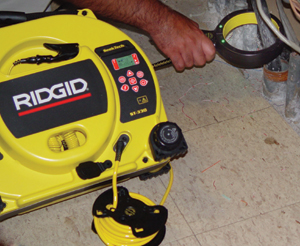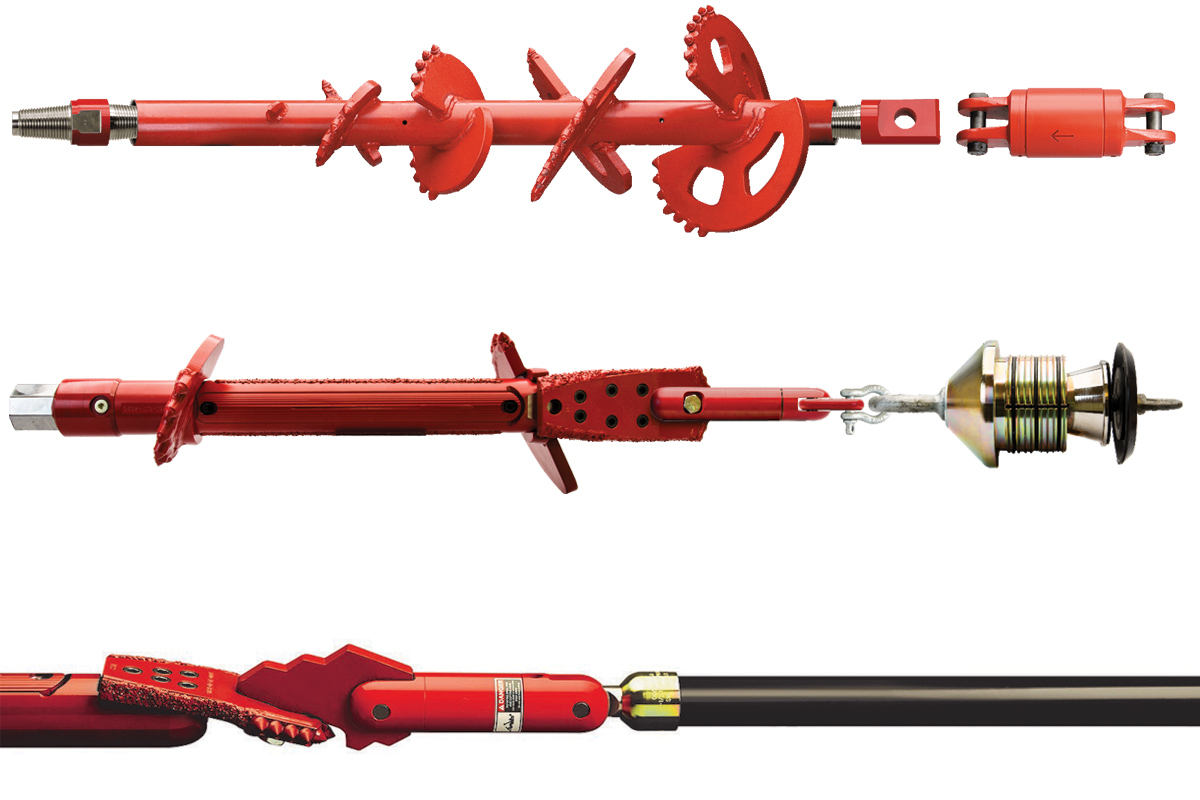Induction: An Important Skill for Locators to Learn
June 1, 2008
 Some locators may have been taught to use induction as a last resort and that is what they practice much of the time. However, when locators need to use it, it is extremely important to know how to use it.
Some locators may have been taught to use induction as a last resort and that is what they practice much of the time. However, when locators need to use it, it is extremely important to know how to use it. Before contractors set out to use induction, they need to know what it is, when to use it and how to use it. There are times when only induction will help reduce interference, and times when induction is the only option.
Introduction to Induction
Induction is the transfer of energy from one circuit (in this case the transmitter’s antenna) to another (utility) without metal-to-metal contact. It is another way to make current flow in a circuit when the professional locator cannot make a metal-to-metal direct connection to the utility.
There are two ways to induce a current onto a target utility. The first method is with a clamp, or coupler, if a direct connection cannot be made. A clamp’s jaws are wrapped around the conductor that the locator needs to energize, and the other end of the clamp is plugged into the transmitter. The jaws put out an electromagnetic field (signal), which induces a current onto the target conductor.
The second type of induction uses coils built internally into the transmitter. When positioned over the target utility, some of the energy emitted from these coils transfers its energy to the utility, causing current to flow.
Using Induction
Induction gives the professional locator a way of getting a signal onto a line when a direct connection is not possible or does not give the desired results.
The benefits of induction are that it:
- Energizes a conductor without physically touching it.
- With proper transmitter management (placement, orientation, aiming, frequency selection and power output), a professional can determine which conductor gets the most signal to create the best locating circuit.
- Induction may, in some cases, help isolate difficult (congested) circuits.
- Induction can be used to sweep an area to see if any conductors are present (i.e., if the likely direction of the pipe or cable is known, two people can sweep, with one carrying the transmitter and one carrying the receiver, as they walk in tandem. If the receiver and the transmitter cross an underground conductor at the same time it may be energized and be detected by the receiver).
Drawbacks of Induction Are:
- It is less efficient because there is no metal-to-metal contact to transfer the current onto the line. A smaller portion of the transmitter’s signal makes it onto the target conductor, limiting the distance over which the line is traceable.
- When using the transmitter coils, the signal can energize all of the surrounding utilities, including utilities aboveground. The higher the frequency, the easier it is to induce a current onto all of the surrounding utilities.
- When using the transmitter coils, air coupling needs to be tested for and avoided.
- The transmitter’s coils are less effective on deeper conductors. Signal strength and the ability to transmit energy decreases as distance increases from the transmitter.
Requirements
To create a circuit inductively, the signal must be able to travel in both directions on a conductor. In other words, the conductor needs to be grounded at both ends. Some conductors do this better than others. As a rule of thumb, lines that require electrical continuity in order to move their product (i.e. electric, cable, phone) are better at this than those that do not (i.e. gas, water).
Remember that a good circuit is needed for current to flow. Higher frequencies may help induction, but will not make current flow in a bad (ungrounded or high-resistance) circuit. Induction also requires a higher frequency than direct connect. Nearly all transmitters work best for induction at a frequency of 33 kHz or higher.
Air Coupling
 Air coupling occurs when the transmitter’s signal travels through open air and is received directly by the receiver. When the professional locator is close to the transmitter, the air coupled signal is much stronger than the signal coming from the target utility, which can distort the signal, add confusion and cause inaccurate readings.
Air coupling occurs when the transmitter’s signal travels through open air and is received directly by the receiver. When the professional locator is close to the transmitter, the air coupled signal is much stronger than the signal coming from the target utility, which can distort the signal, add confusion and cause inaccurate readings. Air coupling distance can vary over a wide range. The air coupling distance can be large, greater than 60 ft if the induced utility is deep and poorly grounded at both ends. It can be short, perhaps 15 ft if the induced utility is very shallow and well grounded. Air coupling varies continuously. As the locator moves away from the transmitter, the distortion caused by air coupling is reduced until the signal from the induced utility dominates and air coupling effects become small.
When using the transmitter to induce, the user must be careful to confirm that a real utility is detected, that an accurate depth measurement is being made and that air coupling does not distort the readings. Air coupling can be tested for on receivers with multi-directional antennas by observing the depth reading. With the receiver’s lower antenna touching the ground, tilt the receiver at a 45-degree angle toward the transmitter, then tilt it about 45 degrees away from the transmitter. If the depth changes significantly, air coupling is occurring.
Another method to test for air coupling is to observe the depth reading while raising the receiver a set distance. Hold the receiver vertically with the lower antenna resting on the ground. Raise the locator vertically about 18 in. and observe the change in depth indication. If the locator is air coupled with the transmitter’s direct field, then depth will change disproportionately.
Tips
There are several techniques that can be used to maximize the success of inductive locating with the transmitter’s coils.
- The signal induced onto a line will be the strongest when the transmitter’s antenna is in line with the conductor (utility). Transmitter cases have arrows to help the locator align the unit properly.
- Aim the signal away from the adjacent non-target utilities and overhead lines.
- When there is a non-target conductor that is located next to the target conductor, orient the transmitter in a way to direct more of the signal onto the target conductor.
Things to Remember
- When creating a circuit to trace, direct connection is usually the best option. However for induction, using the inductive signal clamp or the transmitter itself are important options to consider for difficult line traces.
- Be aware and test for air coupling. The signal needs to be detected from the line underground and not from the transmitter through the air.
- Beware of overhead lines if inducing with the transmitter.
- Experiment and try different positions and frequencies to help isolate the target conductor.
- A good “best practice” when locating is to trace out to a known termination point and mark the line on the way back to the transmitter. This practice is especially important when using induction to energize the underground line as it is more difficult to tell what is being traced. Following to a known termination point helps verify the targeted conductor is being traced.
Induction is an important skill for the professional locator to master. It is not the easiest locating skill and it can seem confusing, especially if multiple conductors are energized. If used properly, however, induction may actually help isolate the target line in some cases. It also provides an option for those times when there is no direct connection point and/or the topside area shows no indication of underground utilities. As always, proper training and continuing education will help develop skills like inductive locating.
Ed McKiernan is vice president of marketing at Ridgid.




